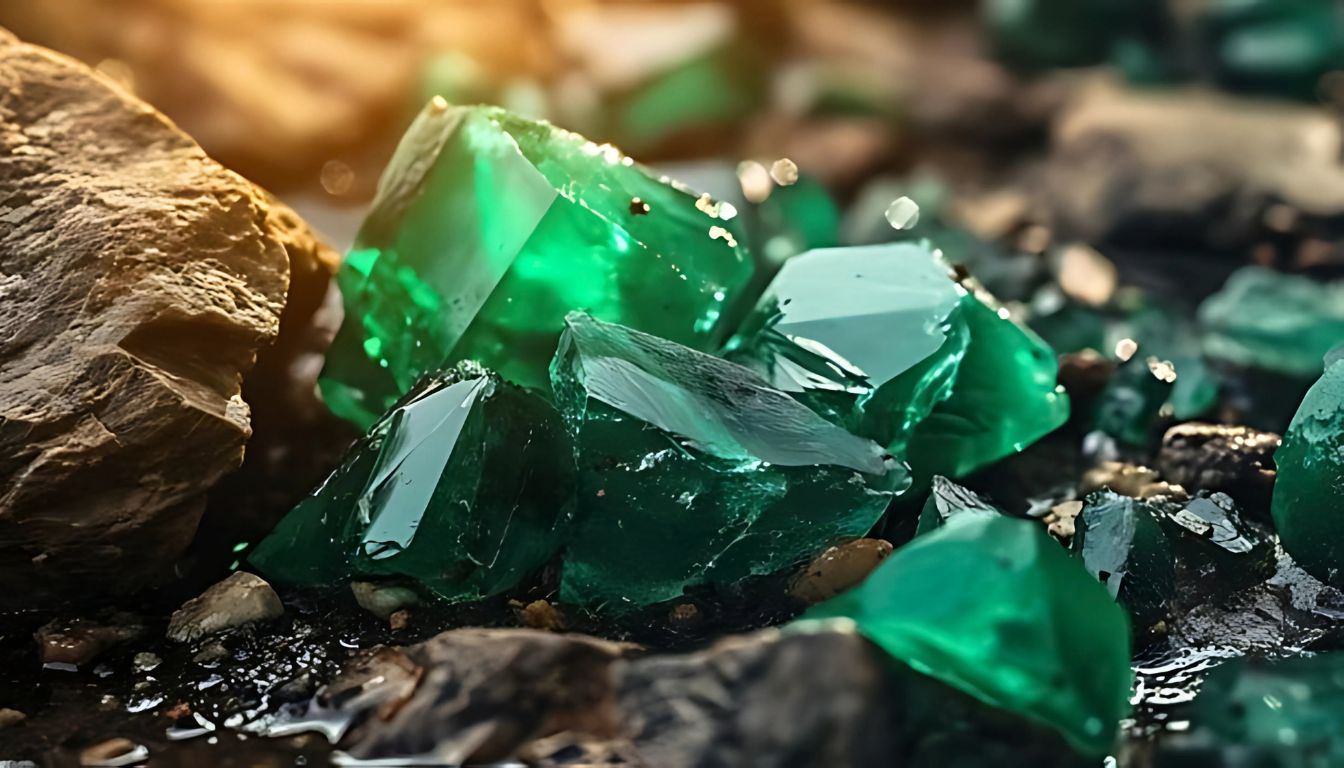Raw emerald is a stunning gemstone that is used in its natural and unprocessed form to be mined from the ground. These green crystals come from the beryl group and are valued for their great hue and if there are inclusions they can only add to the charm. Generally mined in countries such as Colombia, Zambia, and Brazil, raw emeralds may have different clarity and size and have interesting structures and outlines.
This causes their differing colors, mainly that have small amounts of chromium and vanadium and that is why these stones are much valued in jewelry and as curios. In addition to their beauty, emeralds also have significance and attributes such as love, rebirth, and even wisdom thus enhancing their appeal in sensual and mystical quality. Whether to be admired for its form or to be cut as impressive masterpieces, it has always been fascinating to people who are into gemstones.
Table of Contents
What is a Raw Emerald?
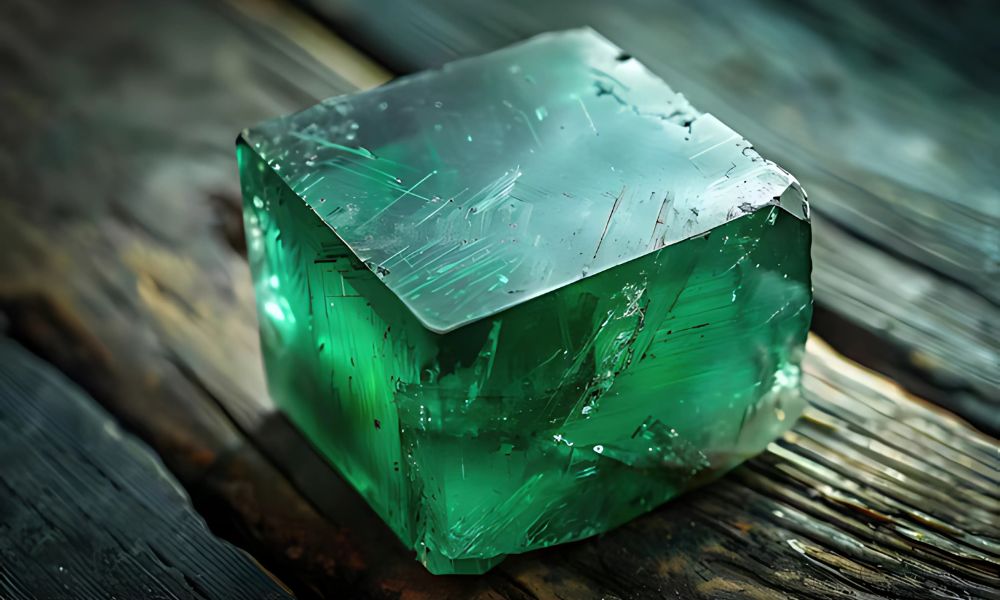
Raw emerald means that it is an unpolished piece of the emerald and it has not been treated. Raw emeralds do not have a cut to them, and were not created for aesthetic purposes; therefore, they possess a quite contrasting structure in comparison with polished ones: they show small cracks, which can be characteristic features of each piece. These stones can range from deep green to medium green or light green with a bluish tinge due to the composition of minerals and the circumstances under which they formed.
The Geological Journey of Emeralds

Emeralds are a type of beryl that is focused green primarily because of the presence of chromium and in some cases vanadium. They usually develop in metamorphic rocks in given geological environments such as high pressure and high temperature. Some of the significant producers of emeralds include Colombia, Zambia, Brazil, and Afghanistan Each of these producing regions brings certain attributes to the Gemstone.
Formation Process
- Geological Conditions:
Natural emeralds are synthesized in hydrothermal veins when mineral solutions raster different rocks that contain beryllium.
- Mineral Infusion:
As these fluids cool, beryl forms and at the same time incorporates chromium and vanadium to allow emerald its rich hue.
- Inclusions:
Characteristic features of most emeralds are numerous inclusions observed as formalized by the French term ‘Jardin,’ which can appeal to a gem’s individuality but compromise its clarity or toughness.
Identifying Raw Emeralds
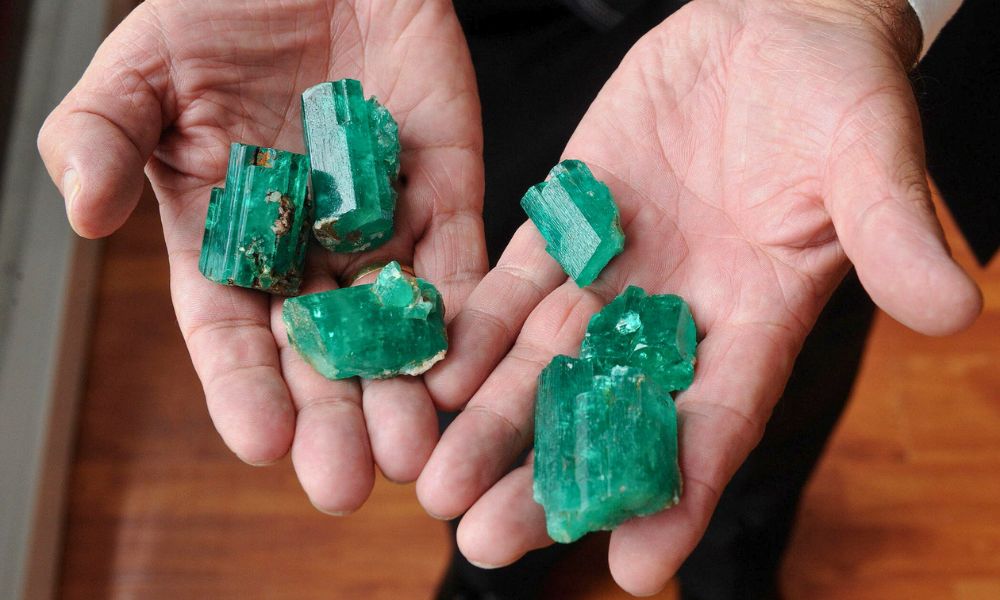
When searching for raw emeralds, several factors can help identify them:
Color: Look for a vibrant green hue. Emeralds are usually classified according to their color, and while raw emeralds are traditionally green, the red emerald is a striking variation that stands out. Only the greenest will do in the high-end market.
Texture: Untreated emeralds may have an uneven surface, frequently exhibiting different sorts of inclusions. They may however exhibit a glassy or vitreous luster.
Hardness: Emeralds fall under the Mohs scale of hardness 7.5 to 8 this means that they are quite hard but can easily be chipped.
Specific Gravity: The specific gravity of emerald ranges between 2.67 and 2.78 making it easy to differentiate from other greenstones.
Testing for Authenticity
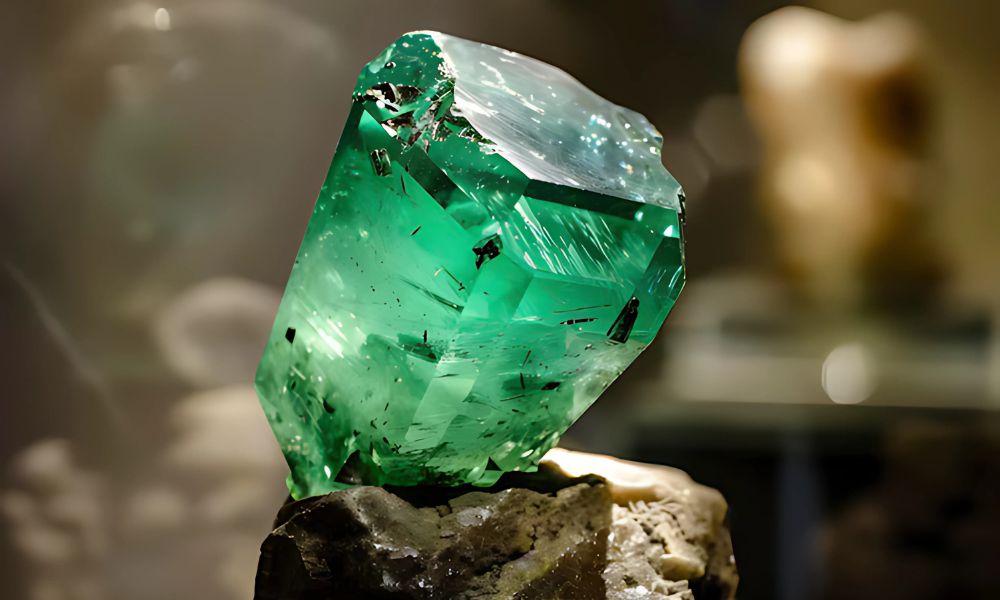
While raw emeralds can be stunning, ensuring their authenticity is crucial:
Refractive Index Test: It is between 1.577 and 1.583 for emerald and is indeed characteristically lower than that of quartz known to be 1.544. This can be useful to check the validity, as it were, of these results.
UV Light Test: Real emeralds may glow in special conditions: when exposed to UV light it shines yellow or greenish.
The Significance of Raw Emeralds
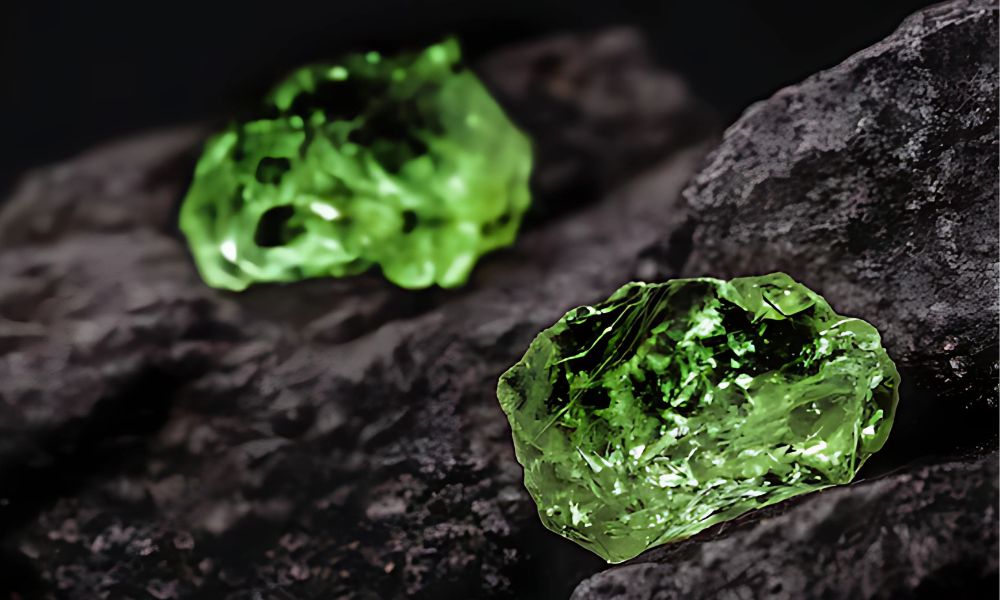
Raw emeralds go beyond being colossal wonders of geology; they are culture bearers, objects of history, and metaphysical entities.
Cultural Importance
Emeralds have been treasured in various cultures throughout history:
Ancient Civilizations: The Incas and Aztecs considered emeralds to hold spiritual power and therefore, used these gemstones to dress their kings.
Royalty and Status: In the 1700s and 1800s Europe, emeralds were considered as power jewels, which were often used in crowns as well as other ornaments of the higher ranks in the society.
Metaphysical Properties
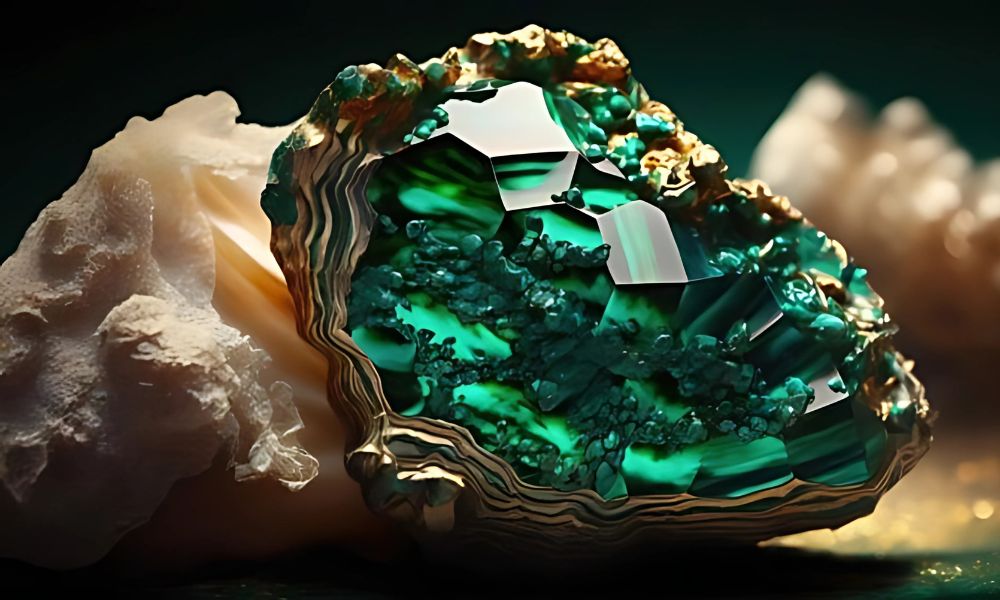
Some people are convinced that raw emeralds have curative and even spiritual effects. They are associated with:
Growth and Renewal: The bright green that fills the dress is considered to symbolize fertility, regeneration, and birth.
Emotional Balance: Throughout crystal healing, emeralds are regarded as the symbol of harmony, stress-free, and soothing mood for emotional well-being.
Caring for Raw Emeralds
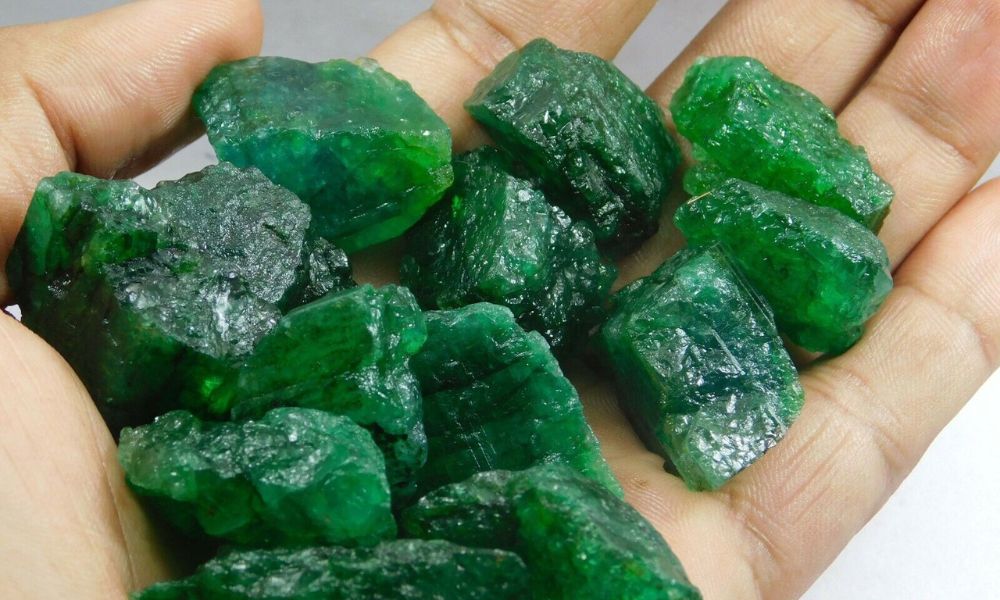
Caring for raw emeralds requires some attention to maintain their beauty and integrity:
Cleaning: To clean raw emeralds lightly, try to use a soft cloth that has been dampened with water. Do not use strong cleaning agents that can somehow harm the stone.
Storage: When carrying raw emeralds, do not put them in a revealing jewelry box or a hard case since they can easily scratch each other and this will lead to lower-quality gems. Do not expose them to other tougher gemstones.
Avoid Impact: Since raw emeralds may offer less durability as compared to polished stones, do not drop them or put them in the cold then place them in hot settings.
Conclusion
Optical Emeralds represent the raw beauty and allure of natural gemstones that start with their creation on earth, traveling through collectors’ hands and jewelry enthusiasts. Whether one is a professional gemologist or an erudite appreciator of gems raw emeralds offer the world an opportunity to admire the gems for what they are and the stories they carry with them. Learning where wooden ornaments come from, why they are important, and how to take proper care of them will help you fully appreciate these true wonders of nature for many years. Even when found in a collection or placed as an element in a work of art, raw emeralds continue to be evidence of our planet’s beauty and richness.
FAQs about Raw Emerald
Q1. Are raw emeralds worth anything?
There are raw emeralds more valuable than others, and these when bought must be known. The price of such stones begins from $200 and may reach $15,000, which depends more on the color and quality of the stone.
Q2. How to tell if a raw emerald is real?
Emeralds are genuine green-colored mineral, that possesses deep and velvety shades of green color. Counterfeits may be lighter or even yellowish-green in color. Also, natural emeralds may have some imperfections that decrease clarity, while others may look transparent or contain bubbles or swirls inside which are signs of a fake one.
Q3. Why are raw emeralds so cheap?
Rough, uncut emeralds are worth less than their faceted counterparts, for a few reasons: Emerald rough for Muzo Mine of Colombia. Labor! It only takes the bad hand of a gem cutter to cut an expensive emerald rough into a cheap emerald.
Q4. What is raw emerald good for?
Some believe it tonifies and nourishes the heart and kidneys, it helps the circulation as well as the neurological system. It raises psychic sensitivity and clairvoyance when used over the third eye chakra, a characteristic of Emerald gemstones. Mystics are able to summon information that is received from other planes using this stone.
Q5. Is emerald more expensive than gold?
Also referred to as the scarlet emerald, this beautiful stone is said to be worth more than pure gold, and yet few people have any knowledge of its existence. A diamond that is currently mined from the Wah Wah Mountains in Utah costs above £8,000 per carat.
Stay Tuned to Gems Tycoon for all gems-related articles.

